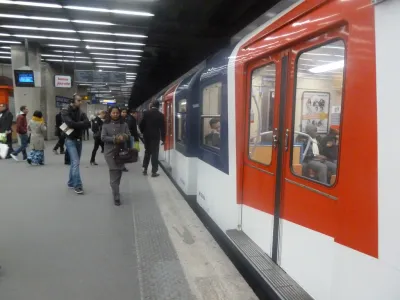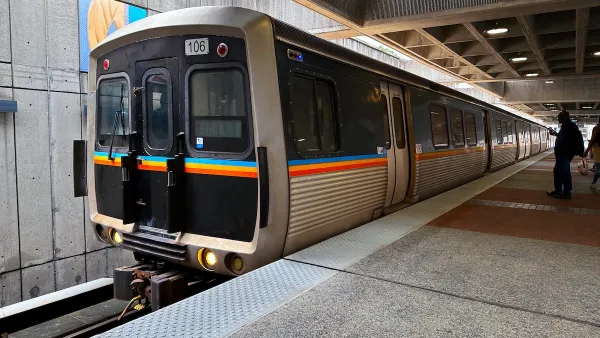The common refrain is that transit is just better in other countries. However, the reasons why are more complex than initial impressions allow, providing important lessons for the United States.

Jonathan English takes a closer look at how transit systems have evolved in Canada and throughout Europe to better understand why transit in the United States lacks in comparison. In short, policy and planning decisions that foster robust service are the key, says English:
Sustaining higher gas prices won’t single-handedly save transit systems, as advocates sometimes wishfully hope. European countries show that, while pricier fuel may drive some people to transit, it doesn’t make a meaningful difference if service isn't improved first.
Both the United States and Europe embraced the automobile after World War II and built the roadway infrastructure to support it. However, says English, in the suburbs of European cities transit remained a priority and train and rail stations were the anchors of new neighborhoods.
In addition, European cities continued to build rail even while developing highway networks, and the extensive commuter rail and bus networks throughout Europe today make transit travel much more feasible. English also says that equitable fare models are important to make transit an accessible and attractive mode of travel.
He says that planners in the U.S. need to look at the possibilities for improving transit, particularly for the suburbs. “All too often, transit planners—and even advocates—find themselves resigned to fatalism about the prospect of transit in American suburbs. They’re convinced that these spread-out and car-centric spaces are fundamentally irreconcilable with public transportation,” says English.
Toronto is an example, says English, of a city similar in variety of ways to many American cities, with an expanse of suburbs and highways. However, bus service connects these suburbs to the subway system. As a result, transit use is much higher and subsidies for transit are much lower than in comparable American cities.
“In some ways, the story of American transit is not so unique. Europeans and Canadians also like to drive. Their countries have also built big expressway networks. The difference is more basic, yet profound: When transit service isn’t good, few will choose to use it,” concludes English.
FULL STORY: Why Public Transportation Works Better Outside the U.S.

Analysis: Cybertruck Fatality Rate Far Exceeds That of Ford Pinto
The Tesla Cybertruck was recalled seven times last year.

National Parks Layoffs Will Cause Communities to Lose Billions
Thousands of essential park workers were laid off this week, just before the busy spring break season.

Retro-silient?: America’s First “Eco-burb,” The Woodlands Turns 50
A master-planned community north of Houston offers lessons on green infrastructure and resilient design, but falls short of its founder’s lofty affordability and walkability goals.

Test News Post 1
This is a summary

Analysis: Cybertruck Fatality Rate Far Exceeds That of Ford Pinto
The Tesla Cybertruck was recalled seven times last year.

Test News Headline 46
Test for the image on the front page.
Urban Design for Planners 1: Software Tools
This six-course series explores essential urban design concepts using open source software and equips planners with the tools they need to participate fully in the urban design process.
Planning for Universal Design
Learn the tools for implementing Universal Design in planning regulations.
EMC Planning Group, Inc.
Planetizen
Planetizen
Mpact (formerly Rail~Volution)
Great Falls Development Authority, Inc.
HUDs Office of Policy Development and Research
NYU Wagner Graduate School of Public Service




























